go kart frame plans with measurements pdf
Go kart frame plans with measurements in PDF format provide detailed blueprints for constructing durable and safe frames. These plans include precise dimensions, material lists, and assembly guides, ensuring accuracy and ease of construction. They cater to both beginners and experienced builders, offering customizable designs for various racing styles and terrains. With clear annotations and step-by-step instructions, PDF plans simplify the building process, making it accessible for enthusiasts to create high-performance go karts.
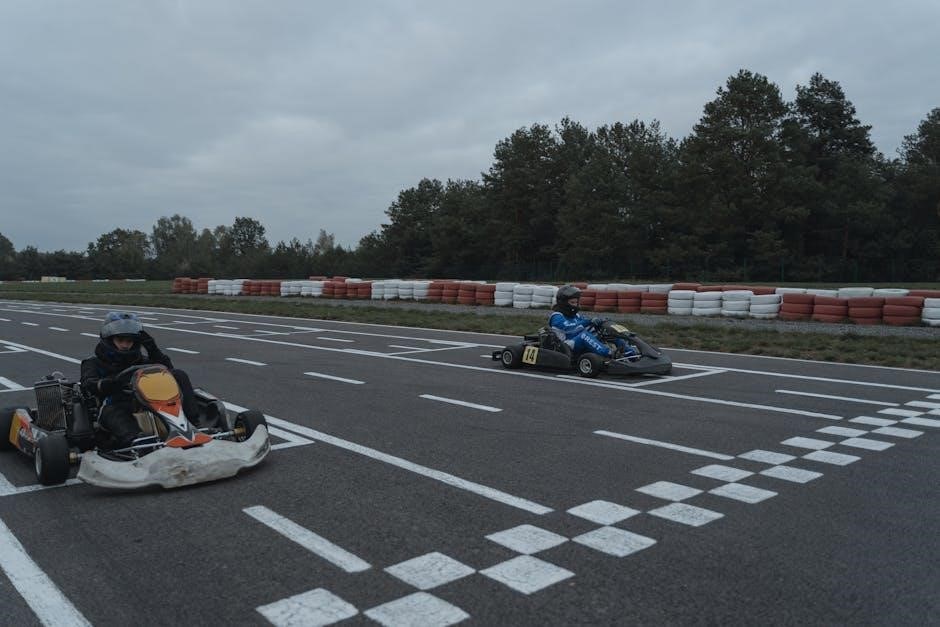
1.1 Overview of Go Kart Frame Design
A go kart frame design serves as the structural foundation, ensuring stability and performance. It typically features a low center of gravity for better handling and includes mounting points for essential components like the engine, seat, and axles. The design often prioritizes durability, using materials like steel or chromoly for strength. Measurements are critical, with precise dimensions provided in PDF plans to guide accurate construction. The frame layout may vary, catering to on-road or off-road use, and is designed to accommodate driver ergonomics and safety.
1.2 Importance of Measurements in Frame Plans
Accurate measurements in go kart frame plans are crucial for ensuring structural integrity and safety. Precise dimensions guide the placement of components like the engine, axles, and seat, ensuring proper alignment and fit. Even small errors can lead to major issues, making precision key; Detailed plans help builders avoid costly mistakes and ensure all parts work together seamlessly. This attention to detail is essential for creating a durable, high-performance frame that meets safety standards and delivers optimal driving experience.
1.3 Benefits of Using PDF Plans
PDF plans for go kart frames offer clarity and convenience, providing detailed, annotated drawings and precise measurements. They are easily accessible and scalable, ensuring accuracy in construction. These plans often include both metric and SAE units, catering to a global audience. PDFs simplify the building process with clear instructions, reducing errors and saving time. They are ideal for customization, allowing builders to tailor designs to specific needs while maintaining structural integrity and safety standards.
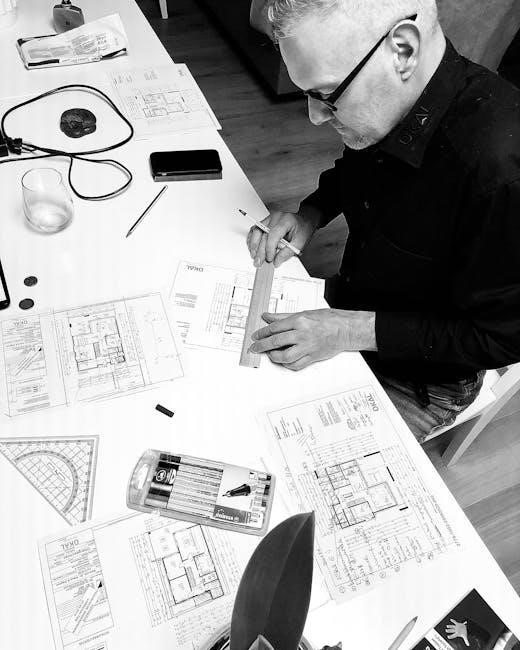
Tools and Materials Needed
Essential tools include welders, grinders, and precision saws. Materials like steel tubing, chromoly, and durable fasteners are crucial. Safety gear such as helmets and gloves is mandatory.
2.1 Essential Tools for Building a Go Kart Frame
Building a go kart frame requires a set of essential tools, including MIG or TIG welders for strong joints, angle grinders for cutting metal, and precision saws for accurate cuts. Measuring tools like tape measures and squares ensure alignment and accuracy. Pliers, wrenches, and screwdrivers are necessary for assembly. A drill press and impact wrench can also be useful. Safety equipment, such as welding helmets, gloves, and goggles, is crucial to protect against hazards during the construction process.
2.2 Recommended Materials for the Frame
The frame of a go kart is typically built using high-strength, lightweight materials such as chromoly steel or aluminum alloys. Chromoly steel, with its high strength-to-weight ratio, is ideal for racing frames, while aluminum offers corrosion resistance and is easier to weld. For recreational karts, mild steel is a cost-effective option. Tubing with a diameter of 25mm to 33mm and a wall thickness of 1.5mm to 3mm is commonly recommended for durability and stability. Additional components like axles and mounting brackets should be made from hardened steel for added strength.
2.3 Safety Equipment for the Building Process
When building a go kart frame, essential safety equipment includes welding helmets, safety glasses, and heat-resistant gloves. A fire extinguisher should always be nearby to handle any accidents. Proper ventilation is crucial when working with metal to avoid inhaling fumes. Wearing a dust mask and steel-toe boots adds extra protection. Ensuring all safety measures are in place helps prevent injuries and ensures a smooth building process.
Safety Considerations
Safety is paramount when building a go kart frame. Ensure proper ventilation, use protective gear like gloves and goggles, and follow welding safety guidelines to prevent accidents.
3.1 Safety Features to Include in the Frame Design
When designing a go kart frame, prioritize safety by incorporating features like a sturdy, low-to-the-ground chassis for stability and roll bars for crash protection. Ensure proper weight distribution to prevent tipping and include a crash cage to shield the driver. Use high-strength materials and reinforce critical points to enhance durability. Additionally, integrate secure mounting points for essential components like the seat, engine, and steering system to ensure reliability and safety during operation.
3.2 Precautions While Working with Metal Frames
When working with metal frames, always wear protective gear such as gloves and goggles to prevent injuries from sharp edges or flying debris. Ensure proper ventilation when cutting or welding to avoid inhaling harmful fumes. Use appropriate tools for each task to maintain control and precision. Keep loose clothing tied back and avoid jewelry that could get caught in machinery. Follow proper welding techniques to ensure strong, durable joints, and never work on a frame without stabilizing it to prevent accidental movement or collapse.
3.3 Weight Distribution for Stability
Proper weight distribution is crucial for a go kart’s stability and performance. The frame should be designed to evenly distribute the weight of the engine, seat, and driver. Ensure the center of gravity is low to enhance handling and reduce the risk of tipping. Focus on balancing the front and rear axles, as uneven distribution can lead to poor traction and instability. Adjusting the frame’s geometry and component placement can help achieve optimal weight distribution for a smooth and safe ride.

Design and Layout
Go kart frame plans with measurements in PDF include detailed drawings and layouts, ensuring precise construction. They feature annotated views and component placements, guiding accurate builds and modifications;
4.1 Drawing the Frame Layout
Drawing the frame layout begins with a detailed plan, ensuring accuracy and alignment. Start by marking a center line for symmetry, then outline the chassis, seat, and engine positions. Use measurements from the PDF plans to plot each component precisely. Include annotations for material thickness and welding points. This step ensures all parts fit correctly, reducing errors during assembly. For clarity, use graph paper or CAD software to create a scalable and adjustable design template;
4.2 Measuring and Marking the Frame Components
Accurate measuring and marking are critical for frame components. Use a caliper or tape measure to ensure precise cuts and alignments. Transfer measurements from the PDF plans to the materials, marking clearly with a marker or stencil. Double-check all dimensions before cutting to avoid errors. Use a square to ensure right angles and symmetry. Proper marking ensures components fit seamlessly during assembly, saving time and reducing waste. Always verify measurements against the plans to maintain structural integrity and safety.
4.3 Using CAD Software for Precision
CAD software enhances precision in go kart frame design by allowing creators to draft detailed, scalable blueprints. It enables accurate measurements, ensuring all components fit perfectly. Users can visualize the frame in 3D, making adjustments before cutting materials. CAD also supports customization, letting builders tailor designs to specific needs. By minimizing errors and optimizing layouts, CAD software streamlines the construction process, resulting in a more durable and balanced frame. It’s a valuable tool for both novices and experienced builders aiming for professional-grade results.
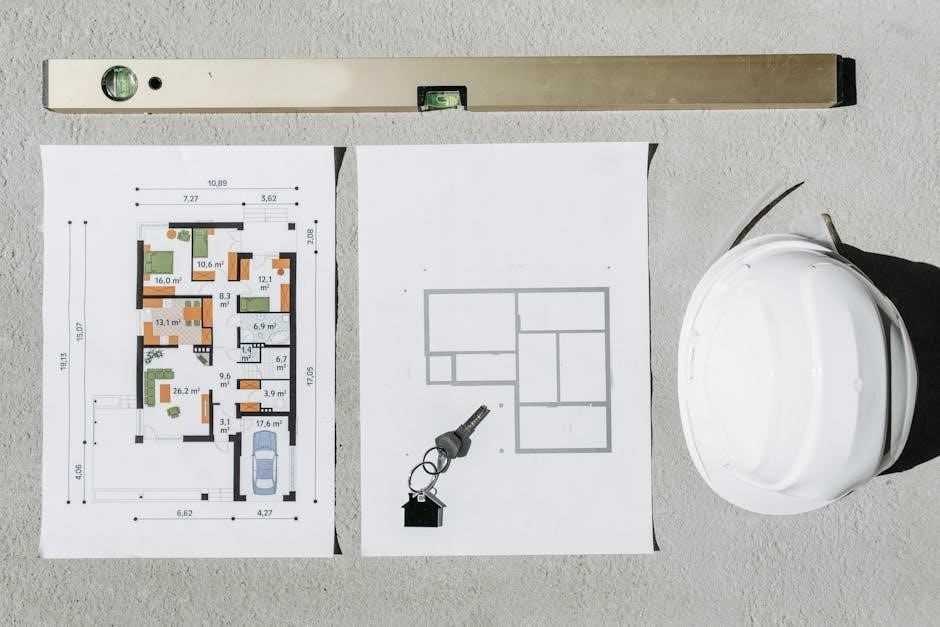
Choosing the Right Frame Type
Selecting the right frame type ensures optimal performance and safety. Recreational frames are durable for casual use, while racing frames are lightweight for speed. Off-road designs feature reinforced structures, and on-road frames prioritize stability. Customizing the frame to suit specific needs enhances overall functionality and driver experience, making it essential to choose wisely based on intended use and performance goals.
5.1 Recreational vs. Racing Go Kart Frames
Recreational go kart frames are designed for durability and ease of use, often featuring heavier materials like steel for stability. Racing frames, however, prioritize lightweight construction, typically using chromoly for strength and speed. Recreational frames are ideal for casual driving, with a focus on comfort and safety, while racing frames are built for performance, offering better acceleration and handling. The choice between the two depends on the intended use, with racing frames requiring more precise measurements and specialized components for competitive environments.
5.2 Off-Road vs. On-Road Frame Designs
Off-road go kart frames are built for durability and stability on rough terrains, featuring higher ground clearance and reinforced structures. On-road frames prioritize speed and agility, with lower profiles for better aerodynamics. Off-road designs often include wider wheelbases and stronger axles to handle uneven surfaces, while on-road frames focus on lightweight materials and precise handling. The choice depends on the intended use, with off-road frames emphasizing ruggedness and on-road frames optimizing for performance and maneuverability on smooth surfaces.
5.3 Customizing the Frame for Specific Needs
Customizing a go kart frame allows for tailored performance and functionality. Frames can be adjusted for driver size, racing style, or terrain by modifying dimensions, materials, and components. For example, using Chromoly steel for high-strength, lightweight frames or adjusting wheelbases for better stability. Customization also includes adding reinforced supports or adjustable mounts to suit specific needs. Detailed PDF plans often provide flexibility, enabling builders to adapt designs while maintaining structural integrity and safety standards.
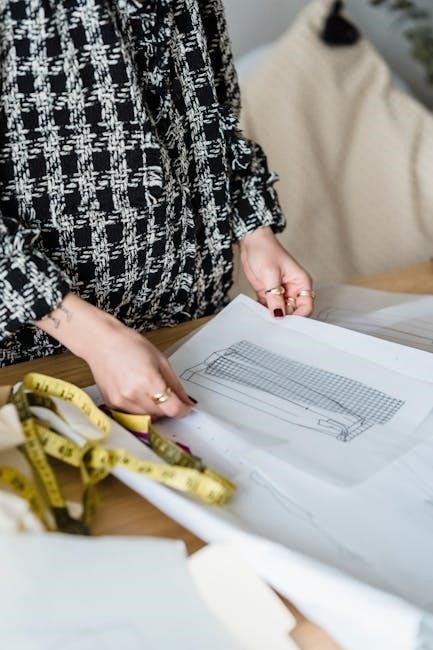
Assembly Process
Begin by aligning frame components precisely, using measurements from your PDF plans. Weld parts securely, ensuring stability and strength. Use tools like MIG welders for durable joints.
6.1 Step-by-Step Frame Assembly Guide
Start by laying out the frame components according to your PDF plans. Use the center line as a reference for alignment. Begin with the chassis, ensuring all sides are evenly spaced. Next, attach the seat mounts and pedal assembly, following the measurements carefully. Install the axle and steering components, making sure they are secure and properly aligned. Finally, weld all joints for strength and durability, double-checking each step to ensure accuracy and safety.
6.2 Aligning and Welding the Frame Components
Aligning the frame components accurately is crucial for stability and performance. Use the PDF plans to ensure precise measurements and symmetry. Clamp all parts securely before welding to maintain proper alignment. Begin welding at the chassis, working methodically to avoid warping. Use a MIG welder for strong, clean joints. Double-check each weld for penetration and consistency. Allow the frame to cool before handling to prevent distortion. Ensure all welds are inspected for strength and durability to guarantee a safe and reliable go kart frame.
6.3 Tips for a Durable and Long-Lasting Frame
To ensure a durable and long-lasting frame, use high-quality materials like chromoly steel for strength and resistance to stress. Apply a protective coating to prevent rust and corrosion. Regularly inspect welds and joints for signs of wear. Avoid overloading the frame beyond its designed capacity. Store the go kart in a dry, cool place when not in use. Follow proper maintenance routines, such as tightening bolts and lubricating moving parts, to extend the frame’s lifespan and maintain optimal performance.
Welding Techniques
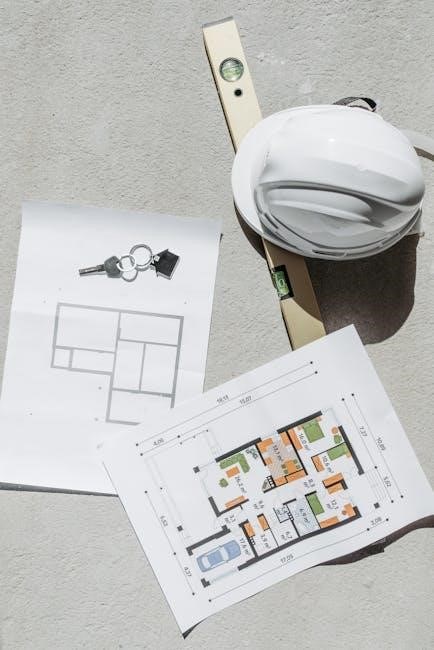
Precise alignment and strong welds are crucial for a durable frame. Use MIG or TIG welding for clean, penetration. Ensure all joints are reinforced for added strength and stability.
7.1 Best Practices for Welding Go Kart Frames
Ensure all metal surfaces are clean and free of debris before welding. Use MIG or TIG welding for precise, clean joints. Maintain consistent weld penetration to avoid weak spots. Reinforce critical joints with additional weld passes for durability. Allow welds to cool naturally to prevent warping. Always wear safety gear, including gloves and a welding mask. Follow the frame plans carefully to maintain structural integrity. Avoid overheating the metal, as it can compromise the frame’s strength and stability.
7.2 Common Welding Mistakes to Avoid
Common welding mistakes include improper alignment of frame components, insufficient weld penetration, and overheating the metal. Rushing the welding process can lead to weak joints and structural instability. Additionally, neglecting to clean the metal surfaces before welding can result in poor adhesion. Avoid using incorrect welding techniques or materials, as this can compromise the frame’s durability. Always follow the measurements and plans carefully to ensure precise and sturdy welds. Proper preparation and attention to detail are crucial for a strong, long-lasting go kart frame.
7.3 Reinforcing the Frame for Strength
Reinforcing the go kart frame is essential for strength and durability. Use materials like Chromoly steel for lightweight yet robust construction. Add gussets and brackets at critical points to enhance stability. Triangulation of the frame design improves rigidity, while crossmembers provide additional support. Ensure all welds are strong and free of defects. Proper reinforcement ensures the frame withstands racing stresses and maintains safety. Always follow the PDF plans for precise measurements and techniques to achieve a durable and reliable frame.
Weight Distribution and Balance
Proper weight distribution ensures stability and performance. A balanced frame aligns the center of gravity with the axle, improving handling. Use Chromoly steel for optimal strength-to-weight ratio, enhancing safety and durability.
8.1 Understanding the Importance of Weight Distribution
Weight distribution is crucial for stability and performance in go karts. A well-balanced frame ensures even load distribution, improving handling and reducing the risk of tipping. Proper alignment of the center of gravity with the axle enhances responsiveness and control. Using materials like Chromoly steel optimizes strength-to-weight ratios, ensuring durability without compromising agility. Even weight distribution also ensures safer braking and acceleration, making it essential for both recreational and racing go karts. Balanced frames provide a smoother ride and better overall performance.
8.2 Balancing the Frame for Optimal Performance
Balancing the go kart frame ensures stability and responsiveness. Proper weight distribution enhances cornering and straight-line stability, reducing the risk of skidding. Symmetrical alignment of components like the engine, seat, and axles is key. Using lightweight yet durable materials, such as Chromoly steel, helps maintain balance without sacrificing strength. Regular adjustments based on driver feedback and terrain conditions further optimize performance. A balanced frame improves overall handling, making the go kart more enjoyable and competitive to drive.
8.3 Adjusting the Frame for Different Drivers
Adjusting the go kart frame for different drivers ensures optimal fit and performance. Seat position, pedal placement, and steering alignment can be tailored to accommodate various driver sizes and preferences. This customization enhances comfort and control, allowing drivers to maintain proper posture and reach essential components effortlessly. By modifying these elements, the frame adapts to individual needs, improving overall driving experience and safety. Regular adjustments ensure the kart remains responsive and comfortable for each driver, maximizing its performance potential.

Adding Components
Adding components involves mounting the engine, transmission, and steering system securely. The seat and safety harness are then attached, ensuring proper installation for functionality and safety.
9.1 Mounting the Engine and Transmission
MOUNTING THE ENGINE AND TRANSMISSION REQUIRES PRECISE MEASUREMENTS AND ALIGNMENT. Ensure the engine is centered and securely fastened to the frame using bolts and brackets. The transmission should be connected to the engine, maintaining proper gear alignment. Use wrenches and drills to tighten all connections firmly. Refer to the PDF plans for specific mounting points and torque specifications. Proper installation ensures smooth power delivery and prevents vibration damage. Always double-check the alignment before final tightening for optimal performance and safety.
9.2 Installing the Steering System
INSTALLING THE STEERING SYSTEM REQUIRES ATTENTION TO DETAIL AND PRECISE MEASUREMENTS. Begin by attaching the steering column to the frame using the specified bolts and brackets. Align the steering rack with the front axle, ensuring proper spacing and angle. Use wrenches and drills to secure all components tightly. Refer to the PDF plans for exact measurements and torque specifications. Ensure the steering wheel is centered and the system moves smoothly without play. Proper installation enhances control and safety, making the go kart more responsive and enjoyable to drive.
9.3 Attaching the Seat and Safety Harness
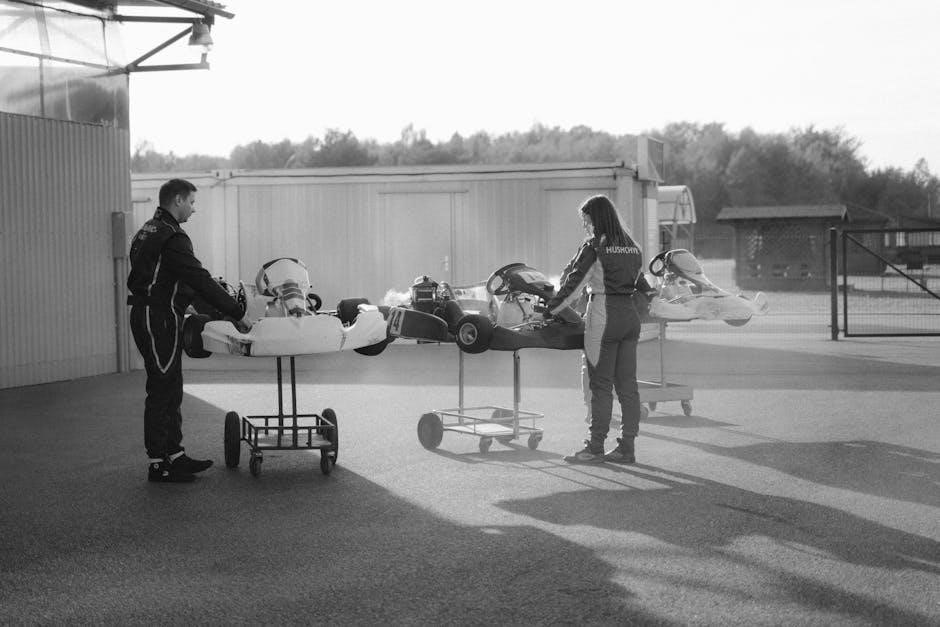
ATTACHING THE SEAT AND SAFETY HARNESS IS CRUCIAL FOR DRIVER COMFORT AND SAFETY. Use the PDF plans to locate the designated mounting points on the frame. Secure the seat using high-strength bolts, ensuring it is level and firmly attached. Install the safety harness by bolting the straps to the frame at the specified locations. Tighten all connections to prevent movement. Refer to the measurements in the plans for proper alignment and spacing. A secure seat and harness ensure the driver remains safe and in control during operation.
Customization Options

Customize your go kart frame with personalized designs, upgraded components, and unique features. Use PDF plans to modify measurements and tailor the frame to your preferences, enhancing performance and aesthetics.
10.1 Personalizing the Frame Design
Personalizing the frame design allows you to tailor the go kart to your preferences and needs. Using PDF plans, you can adjust measurements to create a unique layout, ensuring optimal performance and comfort. Whether it’s modifying the chassis for better aerodynamics or adding custom features like adjustable seating, personalization enhances both functionality and style. This step transforms a standard frame into a bespoke vehicle, reflecting your creativity and driving requirements.
10.2 Upgrading the Frame for Better Performance
Upgrading the frame for better performance involves enhancing its strength, durability, and aerodynamics. Using high-strength materials like Chromoly steel can improve stability and reduce weight. Adding reinforcements such as gussets or brackets at stress points ensures longevity. Adjustable components, like seat mounts or axle positions, can optimize weight distribution and handling. These upgrades not only boost speed and maneuverability but also ensure the frame withstands rigorous use, making it suitable for competitive racing or off-road adventures.
10.3 Adding Unique Features to the Frame
Adding unique features to the frame enhances both functionality and personalization. Consider integrating adjustable mounts for engines or seats to accommodate different drivers. Customizable components, such as quick-release mechanisms or reinforced brackets, can improve versatility. Incorporating lightweight yet durable materials, like Chromoly steel, strengthens the frame while maintaining agility. Additionally, designing a frame with modular sections allows for easy upgrades or repairs. These features not only make the go kart stand out but also optimize its performance for specific racing or off-road conditions.
Troubleshooting Common Issues
Identify frame misalignment or material defects early to prevent structural weaknesses. Refer to PDF plans for precise measurements and repair guides to ensure a sturdy, reliable go kart frame.
11.1 Identifying and Fixing Frame Alignment Issues
Frame alignment issues can lead to poor handling and instability. Use PDF plans to cross-check measurements and ensure all components are properly aligned. Start by inspecting the chassis for any bends or warping. If misalignment is found, disassemble the affected area and realign the frame using precision tools. Re-weld the components carefully, ensuring accuracy. Double-check the alignment with a straightedge or laser tool before final assembly to guarantee optimal performance and safety.
Regularly refer to the PDF guide for troubleshooting tips and step-by-step correction methods to maintain your go kart’s structural integrity.
11.2 Repairing Damaged Frame Components
When repairing damaged frame components, start by assessing the extent of the damage. Use the PDF plans to identify the affected area and measure for precise replacement parts. Cut out the damaged section carefully, ensuring clean edges for welding. Fabricate a new piece using the same materials specified in the plans, then weld it into place. Reinforce the area with additional bracing if necessary to restore strength. Always refer to the PDF guide for exact measurements and techniques to maintain the frame’s integrity and safety.
Regular inspection and timely repairs can prevent further damage and ensure optimal performance.
11.3 Solving Weight Distribution Problems
Weight distribution issues can affect stability and performance. Start by assessing the current distribution and comparing it to the PDF plans. Adjust the placement of components like the engine, seat, and battery to align with the recommended measurements. Ensure the frame design supports even weight distribution by following the plans’ specifications. Test the go kart on a flat surface to confirm balance and make necessary adjustments. Proper weight distribution ensures safety, stability, and optimal handling, as outlined in the PDF guide.
Go kart frame plans with measurements in PDF format provide a comprehensive guide for successful builds. Follow the plans carefully to ensure safety, performance, and durability in your project.
12.1 Final Tips for Building a Successful Go Kart Frame
Always follow the PDF plans meticulously, ensuring precise measurements for a sturdy frame. Use high-quality materials and essential tools like welders and saws. For beginners, start with a small, simple frame and gradually scale up. Utilize CAD software for accuracy and include safety features like roll bars. Double-check weight distribution and component alignment before assembly. Post-weld inspection is crucial for durability. Take your time, as rushing leads to errors. Finally, test the kart in a safe environment to ensure optimal performance and safety.
12.2 Encouragement to Start Your Project
Embarking on a go kart frame project is an exciting journey! With detailed PDF plans and measurements, you’ll have a clear roadmap to success. Remember, building a go kart is not just about the tools and materials—it’s about creativity and perseverance. Start small, follow the instructions, and enjoy the process of bringing your design to life. The sense of accomplishment you’ll feel when your kart is ready is unparalleled. Don’t hesitate to reach out to online communities for support and inspiration. Good luck, and have fun building your dream go kart!
12.3 Resources for Further Learning
For further learning, explore detailed guides on platforms like Instructables and Etsy, which offer comprehensive PDF plans and tutorials. DIY forums and communities, such as DIY Go Karts, provide valuable insights and troubleshooting tips. Additionally, YouTube channels and specialized go kart websites share expert advice and step-by-step videos. These resources will help refine your skills and inspire new ideas for your go kart project. Embrace the learning process and enjoy the journey of creating your custom go kart!
